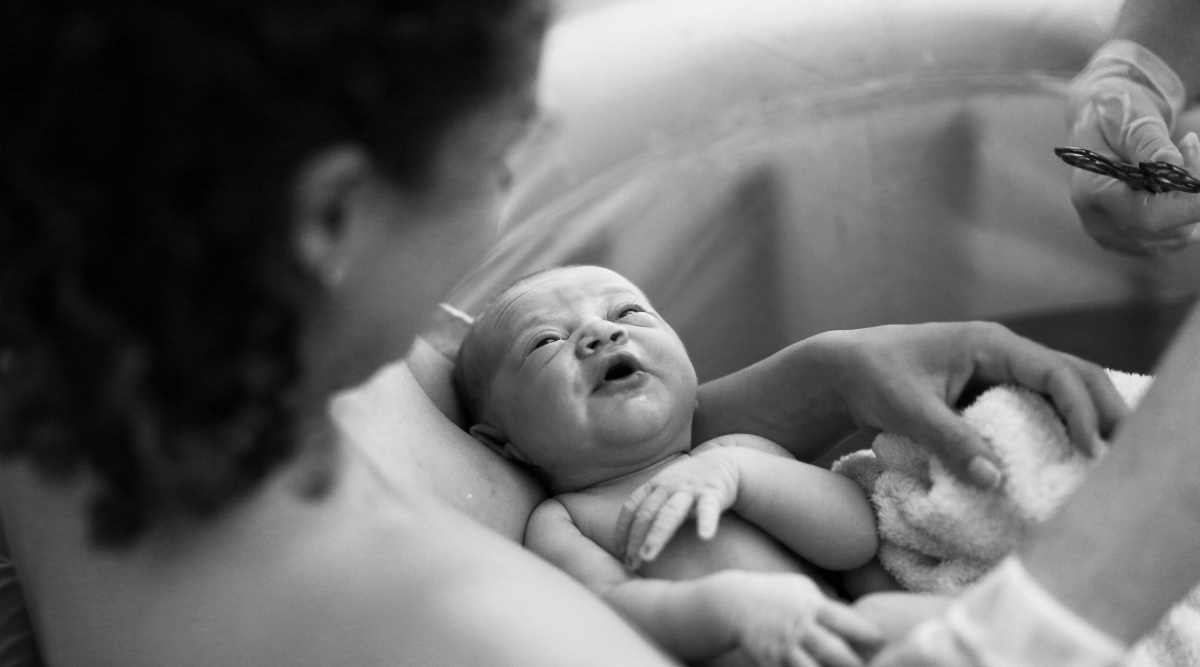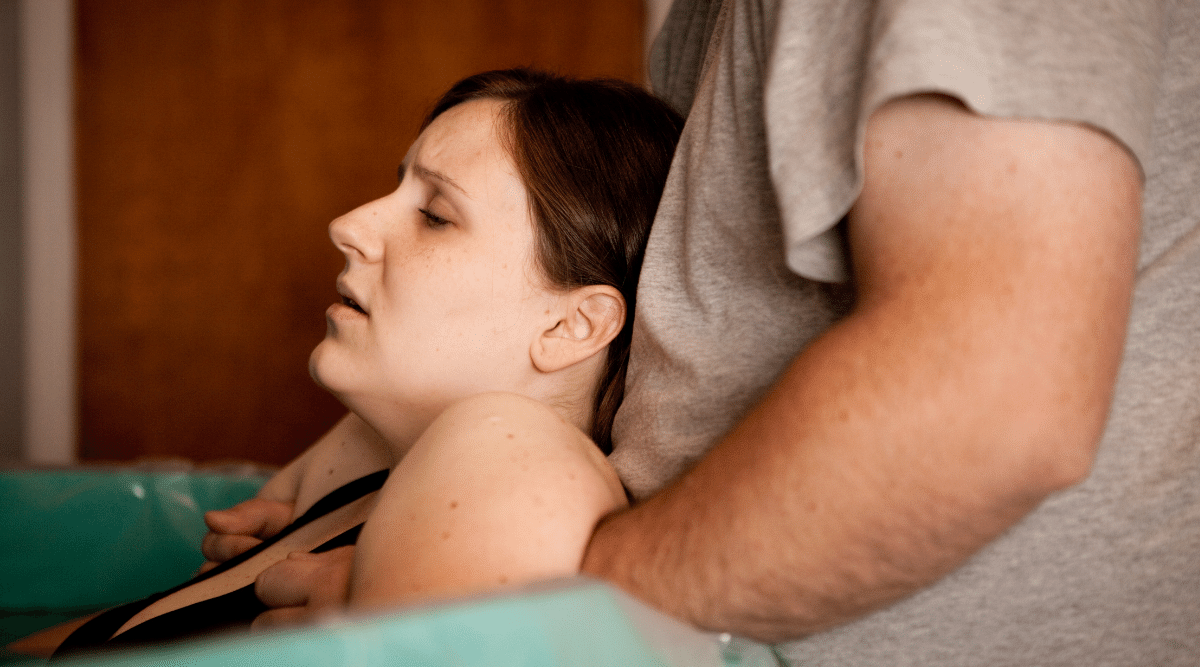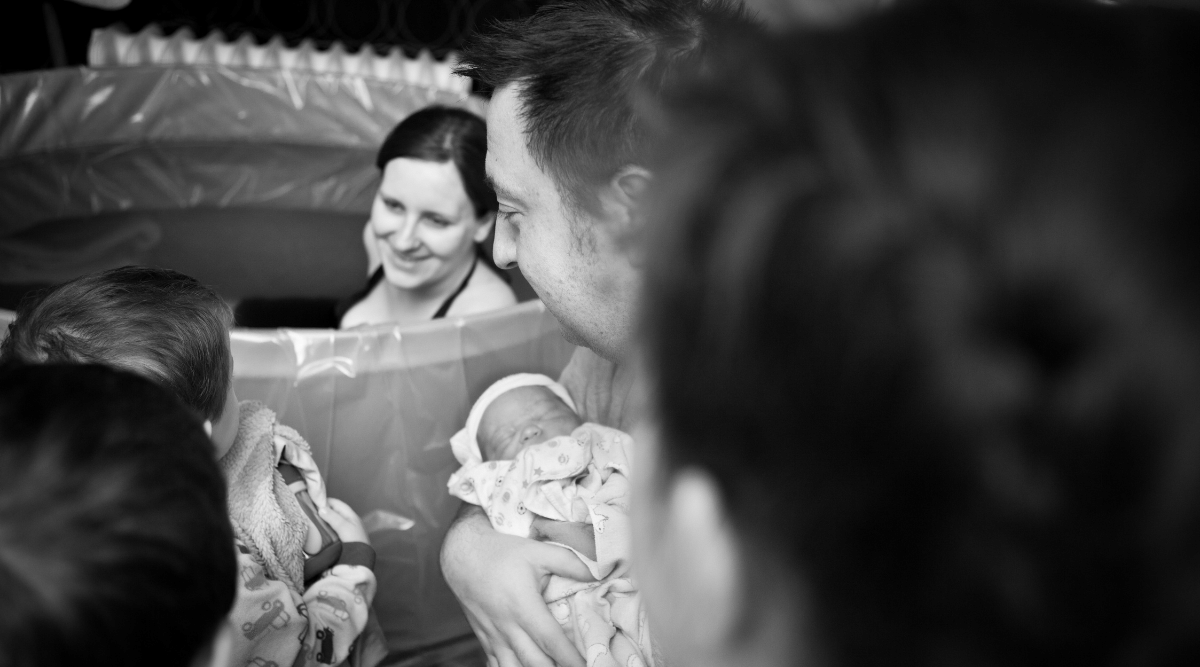Six reasons women choose a planned homebirth
One of the stereotypes around planned homebirth is that it’s mainly for “hippies” – free-love types who live on love and fresh air.
Another is that it is “anti-advancement” types who refuse to accept the advantages of modern medicine and instead want to “birth like in the dark ages”. Some even consider those seeking home birth as selfish and irresponsible – putting their desire for comfort over the safety of their baby.
In fact, there are six main reasons that around 3 in 1000 babies are born at home each year. None of them has anything to do with a love of tie-dye, birthing in caves, or self-indulgence.

1. Choosing homebirth due to a belief in the natural process
Many mothers decide to give birth at home because they see birth as a normal and natural process. They treat it as a family experience rather than a medical one.
As one participant in a US study put it: “It was more about my body [at home] doing its thing, versus the hospital was more about it took a team and chemical[s] and drugs and monitors….it took all these things together to get a baby out…at home it was…just my body…it will just come out.”
2. Familiarity and comfort
Having the privacy, calm and comfort of their own environment is another reason for a planned home birth. This includes having whoever they wish to have present, which for some mothers includes their older children – something much harder to achieve in a hospital.
They also find it easier to relax with the continuous care of a known midwife, rather than a potential merry-go-round of different hospital staff.
For example, one research participant described continuity of care as the midwife: “being available for questions and just sitting like an old friend and chatting and just being so genuinely interested in not just my pregnancy but also our lives and the birth itself.”

3. Freedom to choose
In a 2021 survey of over 1,600 Australian women who had chosen to birth at home, researchers asked about how they made decisions. The vast majority (over 75%) of homebirth mums could make decisions. However, only 13% to 15% of those in the hospital said they had the same freedom. For example, did their care provider involve them in decision-making, help them understand the information they needed, and respect their choice?
Similarly, as a mother in a 2020 Australian study explained: “to get the best, I feel like I need to be in control and for me to be in control and to be safe means I need to be at home”.
Being in control could mean making relatively simple choices. Choices include:
- the freedom to have immediate skin-to-skin contact
- uninterrupted breastfeeding
- have a waterbirth
- choosing a birth position
4. Avoiding unnecessary interventions
Women in the 2021 study also said they used their planned homebirth to avoid interventions. Interventions include
- Induction
- use of forceps
- breaking their membranes artificially
- episiotomy (a cut in the perineum)
It’s important to remember we are not talking here about women avoiding necessary interventions that are required for their baby’s safety. In the words of one mum: “[in hospital] there’s a clock ticking, and there’s a timeframe, and the protocols are a little bit more rigid”.
The literature backs up these women’s choices. The Lancet published a 2020 review of the research, showing that women who decided to give birth at home had fewer caesarean births, operative vaginal births, episiotomies, or tears into either the muscles or anal passage. In short, homebirths more commonly occur without unnecessary trauma to mother and baby.
5. A broader definition of safety
Whether planning to birth at home or in hospital, all parents give great weight to how safe they and their baby will be. However, there is more to safety than simply physical health.
Some of the risks homebirthing parents are trying to avoid are:
- unnecessary intervention
- exposure to infection
- a lack of one-on-one care
But more broadly, women planning homebirth also tend to include emotional and psychological safety, as well as medical safety, in their definition of what makes an “ideal birth”.
6. Previous difficult experience
Around 1 in 3 women choosing a planned homebirth have already had a negative hospital experience that they don’t want to repeat. For instance, hospital staff did not listen to them, did not respect their choices, or bullied them. For these women, a planned homebirth can become a healing birth.
One US research participant explained, “I felt like with my first birth, going from induction to c-section to NICU to craziness, that a lot was taken from me and that I think I lost some of myself with that and I had to work through a lot of that. My homebirth was healing in a lot of ways for me … I actually had a choice, and I felt empowered”.
Women who expressed these views can be considered as placing their own needs ahead of their baby’s. However, the reality is that traumatic birth is considered a risk factor for postnatal depression and negatively impacts the mother-baby bond.
This provides solid proof that birth trauma damages both mothers and babies. Healing these past wounds supports women’s mental and emotional health and their new babies.

Is homebirth safe?
Certain factors can influence how safe a planned homebirth is, including aspects of the pregnancy, the mother’s health, and the nearest hospital.
However, both the peak body for midwives and the peak body for obstetricians in Australia agree in their position statements – women should be able to make an informed choice as to where they give birth.
In the words of the Australian College of Midwives: “Birth for women and their families is a major life event and a rite of passage that should be respected and facilitated. Women have a right to decide where they wish to give birth to their baby.”
High-quality evidence shows planned homebirth with a registered midwife is as safe as birthing in a hospital for healthy, low-risk women.
Ultimately, talk with your maternity care provider to make your own decision. Ask about the pros and cons of different birthing places for your particular situation. Also, discuss strategies to make them safer and more satisfying.
Reference List
PBB aims to keep you informed with the latest research-based information. Check out our reference list used in the creation of this article.
Published 15th March 2022
About the Author
Louise Wedgwood is a freelance health and parenting writer, working with magazines, online publications and businesses. She has a background in health science, and enjoys helping parents make evidence-based choices. Her own children have shown her making the right decisions is never black-and-white.
Share this Post
Recent Posts
Recent Comments
- Jane Palmer on Fifteen with Twins
- Kc on Fifteen with Twins
- Kc on My Story about Teenage Pregnancy
- Laura-Jane Marsden on My Story about Teenage Pregnancy
- Jessica on My Story about Teenage Pregnancy
Archives
Categories
PBB’s Social Media Pages
The post Six reasons women choose a planned homebirth appeared first on Pregnancy Birth and Beyond.
Read Original Article: Six reasons women choose a planned homebirth »




